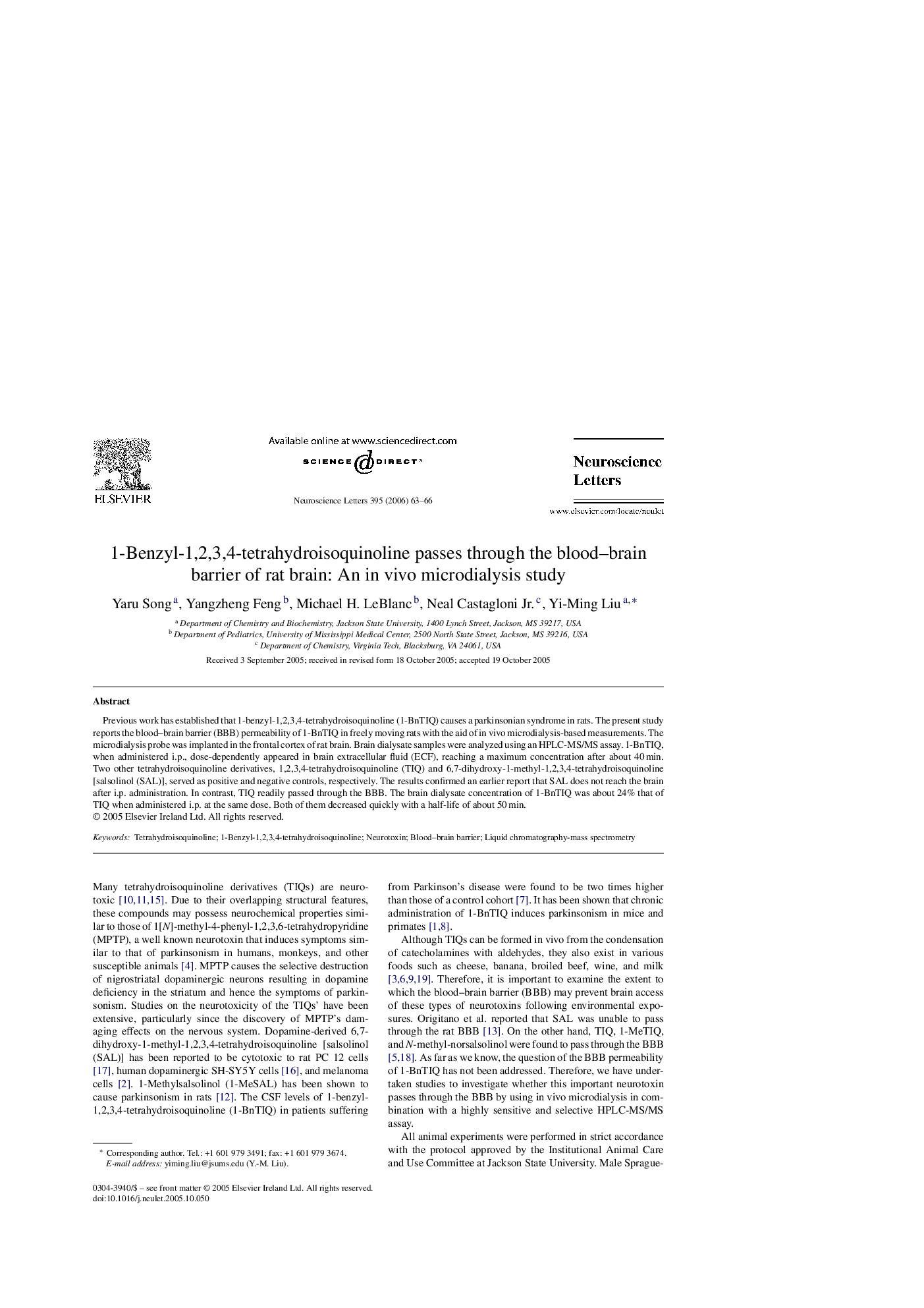| کد مقاله | کد نشریه | سال انتشار | مقاله انگلیسی | نسخه تمام متن |
|---|---|---|---|---|
| 4351067 | 1297005 | 2006 | 4 صفحه PDF | دانلود رایگان |

Previous work has established that 1-benzyl-1,2,3,4-tetrahydroisoquinoline (1-BnTIQ) causes a parkinsonian syndrome in rats. The present study reports the blood–brain barrier (BBB) permeability of 1-BnTIQ in freely moving rats with the aid of in vivo microdialysis-based measurements. The microdialysis probe was implanted in the frontal cortex of rat brain. Brain dialysate samples were analyzed using an HPLC-MS/MS assay. 1-BnTIQ, when administered i.p., dose-dependently appeared in brain extracellular fluid (ECF), reaching a maximum concentration after about 40 min. Two other tetrahydroisoquinoline derivatives, 1,2,3,4-tetrahydroisoquinoline (TIQ) and 6,7-dihydroxy-1-methyl-1,2,3,4-tetrahydroisoquinoline [salsolinol (SAL)], served as positive and negative controls, respectively. The results confirmed an earlier report that SAL does not reach the brain after i.p. administration. In contrast, TIQ readily passed through the BBB. The brain dialysate concentration of 1-BnTIQ was about 24% that of TIQ when administered i.p. at the same dose. Both of them decreased quickly with a half-life of about 50 min.
Journal: Neuroscience Letters - Volume 395, Issue 1, 27 February 2006, Pages 63–66